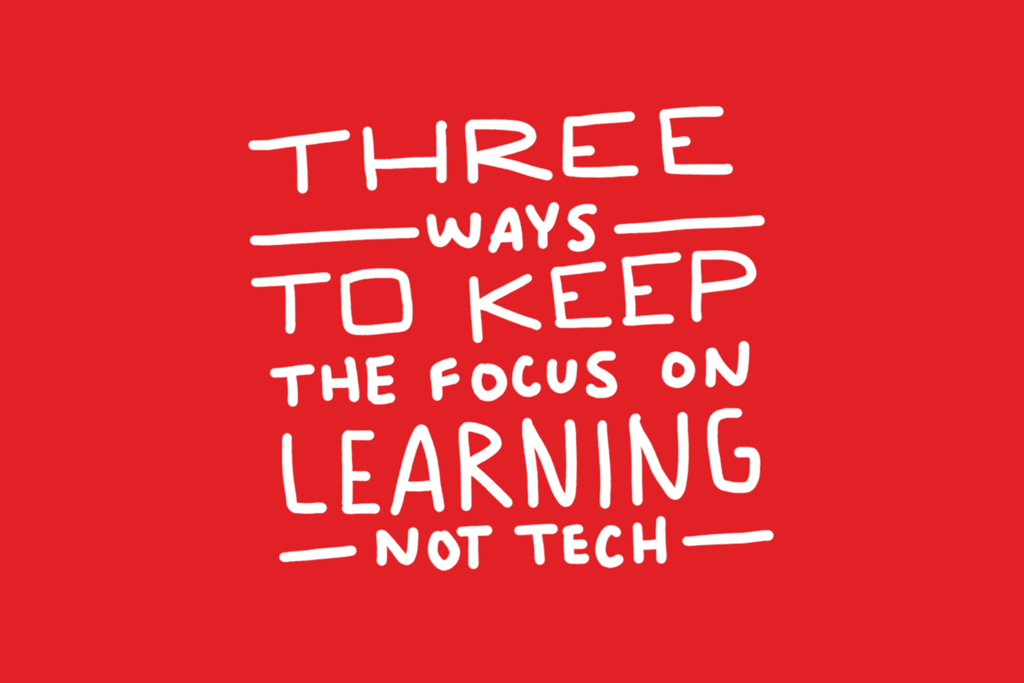Qontent by QOMO

No More Tech for Tech’s Sake
3 Ways to Keep the Focus on Learning, Not Tech
Educational technology has come a long way from simple desktop computers lined up at the back of a classroom. Screens are larger and crystal-clear, real-time collaboration is easier, and features are more dazzling. The learning landscape is changing, and school leaders are eager to catch up.
However, adopting educational technology in the classroom without a clear plan for how to use it can be just as bad as not using technology at all.
“I still see so much blind investment in technology… and that is not a useful approach,” says Justin Bathon, associate professor in the Department of Educational Leadership Studies at the University of Kentucky, and the director of Innovative School Models for the College of Education. Bathon emphasizes the importance of understanding what educators are hoping to achieve with classroom technology implementation, before making the investment.
An interactive panel can become a novelty and a distraction, or it can become a window into hundreds of thousands of open source lesson plans, and streaming access to high-quality educational videos on every imaginable subject. “The technology only makes a difference when there is really intentional leadership and change in practice by teachers,” Bathon adds.
Teachers hoping to incorporate technology into their lesson plans can use a few strategies to ensure that the focus remains on learning, and not tech:
1. Only use it if it enhances your teaching.
If you find yourself struggling to fit tech into a lesson plan, it’s okay to go low-tech for a day. Make sure you’re only implementing it to enrich the learning experience for your students, and not to simply prove to administration that you’re using it.
2. Go beyond the software.
QOMO’s interactive displays and whiteboards are equipped with software that’s designed to help you, but there’s a world of apps, downloadable lesson plans, and videos to explore online. From allowing your students to witness historic events on live video, to navigating around the globe using Google Earth, technology in the classroom gives you the ability to acquire and share material that brings a lesson to life in a matter of seconds.
3. Let your students use it.
Educational technology is designed to be interactive for a reason. Whether you implement a Bring Your Own Device (BYOD) strategy or use your interactive panel as a hands-on learning station, ed tech works best when students are allowed to not only see and hear but touch and collaborate.
Before your school makes a purchase, decide what your classroom really needs, and imagine how educational technology can help amplify what you’re already accomplishing as a teacher.
Not sure what you need, or want ideas about how to use technology in the classroom? Reach out to us!
Sources
Q&A With an Ed-Tech Expert: Don’t Focus on the Tools

